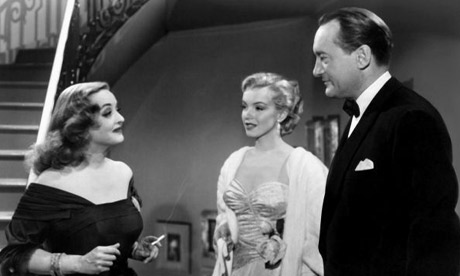Ebertfest, Part 2
Posted on April 28, 2009 at 3:58 pm
It took me nearly 48 hours to get home due to weather and other delays, but I am back with some more from the Ebert festival.
I was on a panel called “Film Criticism and the Web,” with 10 critics including Richard Roeper, the Chicago Tribune’s Michael Phillips, radio and television stations WGN’s Dean Richards, Time Out Chicago’s Hank Sartin, Ain’t-It-Cool’s Steve Prokopy (aka Capone), Kim Voynar of Film Essent and Movie City News, Lisa Rosman of US Weekly and Flavorpill, and eFilmCritic’s Eric Childress and Peter Sobczynski. We spoke about our concerns that print film criticism was shrinking, but the very make-up of the panel demonstrated the reach and variety of voices available through other media.
Following his treatment for cancer, Ebert cannot speak. But he is marvelously expressive, his enthusiasm for these marvelous movies communicated with his every gesture. He has a laptop that synthesizes text into speech and he thought as long as he could not speak with his own voice, why not have a very classy British accent? You can hear him introduce the young Romanian star of “The Fall,” Catinca Untaru, standing with her mother and step-father, in this clip. Prokopy and I interviewed her before the audience following the screening. She appeared in the film almost half her life ago — she is now 12 — and it was a lot of fun to see that while she is very grown up, she is still as unaffectedly charming as she was in the film. I thought it was very funny that she said she wanted to see the Swedish vampire film on the schedule, “Let the Right One In,” because in Romania they know a lot about vampires!
Standing next to him is Chaz Ebert, Roger’s wife, who served as the very gracious mistress of ceremonies throughout the festival. I was very touched by all she and Roger did to make me feel especially welcome.
The theme of the festival is a quote from Roger: As film exhibition in North America crowds itself ever more narrowly into predictable commercial fodder for an undemanding audience, we applaud those brave, free spirits who still hold faith with the unlimited potential of the cinema. There was no more touching moment in the festival than in the discussion following the stunning documentary about the damage caused by Katrina and by the failure of government and humanity that followed. The young woman whose own footage was in every sense the heart of the film, Kimberly Rivers Roberts, spoke about how the movie helped her to pursue her dream of being a recording artist. “I didn’t know what I could do until I saw myself on screen,” she said. At their best, movies reflect back to us a self we hardly dreamed we were capable of becoming. The 14 films at this festival left the audience filled with new ideas of what we can be.
The first person who sends me an email at moviemom@moviemom.com with Ebert in the subject line will get a baseball hat and t-shirt from the festival.



